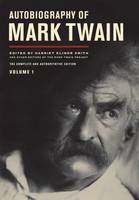All people think that New Zealand is close to Australia or Asia, or somewhere, and that you cross to it on a bridge. But that is not so. It is not close to anything, but lies by itself, out in the water.
The talk of the town 120 years ago in Christchurch was the visit of Samuel Clemens aka Mark Twain, who despite some initial ignorance as to our whereabouts (as illustrated in the above quote), made it safely to the shores of Aotearoa in spring 1895, and would spend 4 days in our own fair city.
It seems that Twain's visit was on a par with those of pop stars of today. His performances were wildly popular. Originally scheduled to perform 3 shows at the Theatre Royal on Gloucester St, an extra date had to be added due to demand. He was hosted and shown the sights (such as the museum and botanic gardens), and a dinner was given in his honour. And as is still the case with foreign dignitaries, he was thoroughly interrogated by journalists into giving positive reviews of the scenery (some things never change).
Twain had undertaken a world tour due to financial troubles and used his travels as the basis for a "non-fiction" account Following the Equator which was published in 1897. I use the term non-fiction cautiously. Though the book does more or less faithfully document the itinerary of his world tour, Twain was a self-admitted liar and yarn-spinner and some of the stories in the book are of a spurious nature. Take for instance the information he gleans from a fellow traveller about the Moa.
The Moa stood thirteen feet high, and could step over an ordinary man's head or kick his hat off; and his head, too, for that matter. He said it was wingless, but a swift runner. The natives used to ride it. It could make forty miles an hour, and keep it up for four hundred miles and come out reasonably fresh. It was still in existence when the railway was introduced into New Zealand; still in existence, and carrying the mails. The railroad began with the same schedule it has now: two expresses a week-time, twenty miles an hour. The company exterminated the moa to get the mails.
Oh, really?
This passage is accompanied by an utterly bizarre and grotesque illustration featuring a moa, being ridden by a Māori man, kicking the head off another - while also carrying a bag of mail.
Of course, this tale is related by an unnamed third party so Twain could always just have claimed he'd been misinformed if proved incorrect - which is an old, tale tellers' trick... and a good one.
In any case, he did get to see his legendary moa (or at least the skeleton of one) at Canterbury Museum. In terms of scenery he thought our riverside weeping willows "the stateliest and most impressive" in the world. He was also struck by the Englishness of Christchurch saying, in his usual sardonic style -
If it had an established Church and social inequality it would be England over again with hardly a lack.
He also applauded the success of women's suffrage in New Zealand (women had got the vote in 1893), the good sense of which he summed up in the following statement -
In the New Zealand law occurs this: "The word person wherever it occurs throughout the Act includes woman."
Well, of course.
More about Mark Twain in Christchurch
- Mark Twain at home in Christchurch, November 1895 Lost Christchurch
- Following the Equator, (see Chapter 32) Project Gutenberg
- Newspaper accounts of the time Papers Past






Add a comment to: Mark Twain, the tourist